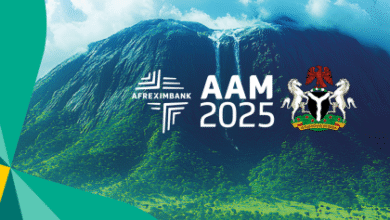Lower commodity prices, rising borrowing costs, reduced economic growth in developed and emerging countries have led to a decline of the African economic growth although sub-Saharan Africa is globally progressing.
According to a recent report from Ernst & Young (EY), the economic growth in Africa is expected in the coming years to be slower than in the previous 10-15 years. The baseline projection of the International Monetary Fund (IMF) for 2016 is now reduced to 3%, while it was estimated at 6.1% in April 2015. This decline is not exclusively African as most of the emerging markets notice a general economic slowdown due to the rebalancing of the Chinese economy, the continued stagnation of the most developed economies, the decline in commodity prices and the rising borrowing costs.
The rise in foreign investment
The report notes, however, that even if growth in the region slowed down, two-thirds of sub-Saharan African economy is still growing at rates above average. It also demonstrates that the region will maintain its second position after Asia in terms of speed of growth worldwide .In the year 2015, foreign direct investment (FDI) have increased in Africa when the total number of FDI decreased by about 5% worldwide . Africa was one of the two regions in the world where the number of FDI increased compared to last year. « From an investment perspective, the next few years can be difficult, not because the opportunities are not there, but because these opportunities are probably more unequal than they have ever been. It is now crucial for companies and particularly investors, who sometimes focus on the short-term economic growth, to adopt a factual and granular approach to evaluating business opportunities and investment over the long term, « said Sugan Palanee, head of the African market at Ernst & Young.
Determine the potential and progress
In order to support investors accommodate with an uncertain environment and evaluate opportunities and variable risk across the continent, the EY barometer of Africa’s attractiveness (AAI for « Africa Attractiveness Index » ) provides a balanced set of short- and long-term measures. The barometer measures the likely resilience in the context of current macroeconomic pressures as well as progress in the critical areas of long-term development, namely governance, diversification, infrastructure, business opportunities and human Development. « It is important to underline that this type of classification index does not provide a definitive assessment of any of these markets, however, the barometer of Africa’s attractiveness provides a useful starting point for analysis and helps promote a strategic dialogue on growth priorities, risk appetite and investment criteria, « says Michael Lalor , Director of the African business Center EY.
Different priorities for different countries
Despite the macroeconomic challenges and a low-growth environment, South Africa is at the top among the other African economies. Indeed, the South African economy is more developed than the others. As for Kenya and the Ivory Coast, they benefit from strong economic performance and growth prospects. The two countries have indeed good infrastructure and business opportunities. Furthermore, the report reveals that Botswana, Mauritius and Rwanda, although small markets, have a strong track record in the fields of business opportunities, social development and economic management. Regarding North African countries, Egypt, Morocco and Tunisia, as well as Ghana in West Africa have the advantage of a relatively favorable business environment, good infrastructure and, in the case of Ghana, a strong governance record.
Nigeria’s «under-performance » on the IAA, in fifteenth place overall, is somewhat surprising: while the Nigerian economy ranks as one of the most resilient of Africa, its low scores in the pillars of business opportunities, governance and human development are reflected in the overall standings. Similarly, other fast-growing economies like Tanzania, Uganda and Ethiopia which is first on the list, all rank in the top 10 in terms of macroeconomic resilience, but also recorded a relative underperformance in other longer-term dimensions. « Given the scale, complexity and the fragmented nature of the African continent, it is more critical than ever to make informed choices about the markets in which to enter, when and by what means. Macroeconomic resilience of a country is also one of the few factors that investors and companies need to consider when conducting this type of analysis. We are at an inflection point in terms of structural development of most African economies; decisions and actions taken now will determine which of these savings will consolidate the gains of the last decade into a sustainable growth platform for the coming decades and which of them are beginning to recede, « asserts Michael Lalor.
Depending on the variety of opportunities, investors will have to adapt to the economical specificities of different regions or countries and face the security and economic context of each.
By Darine Habchi







